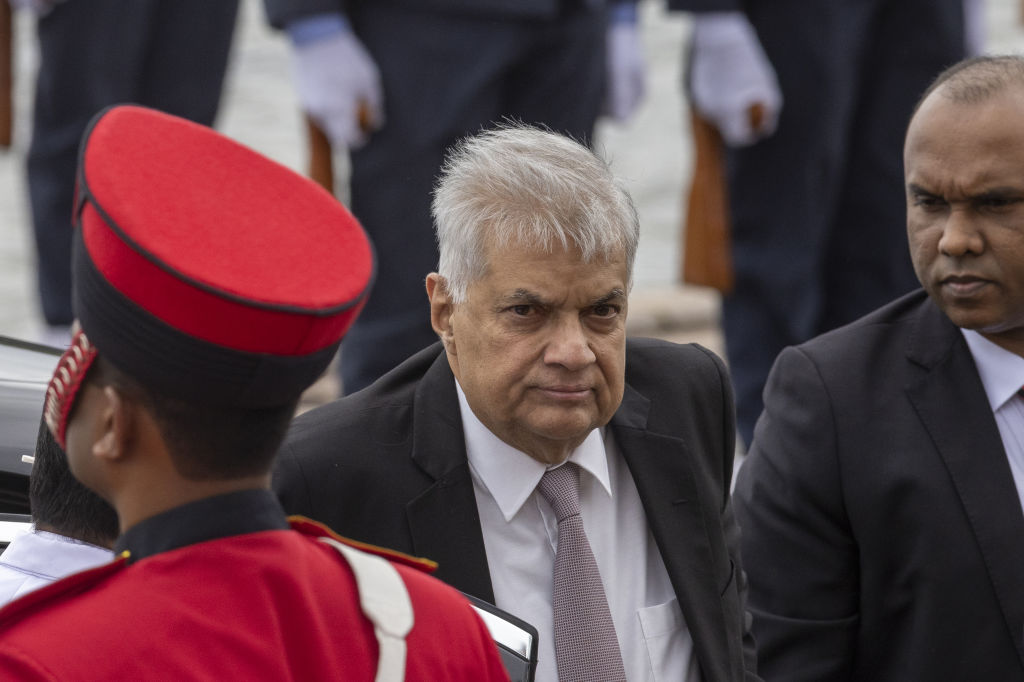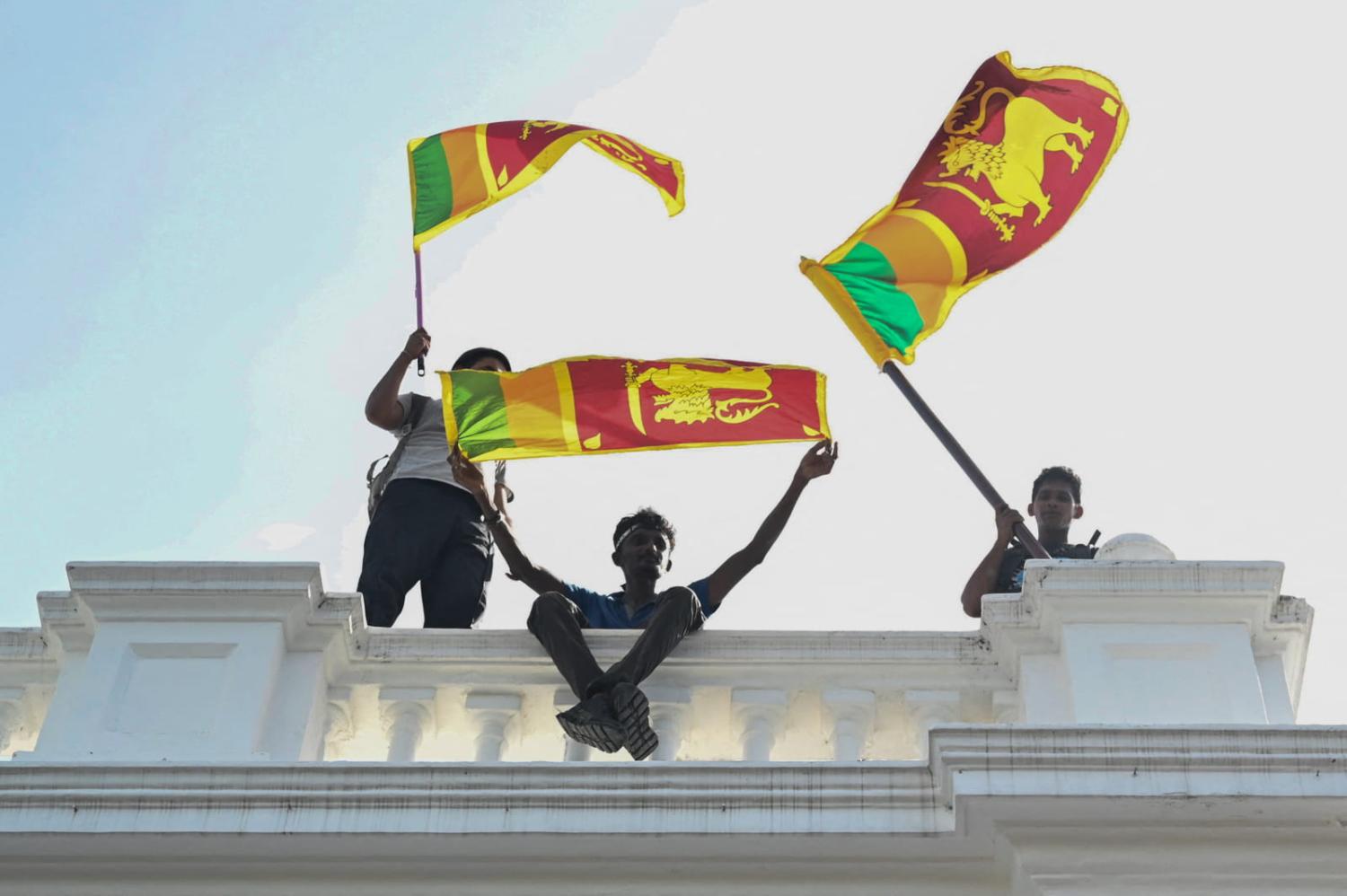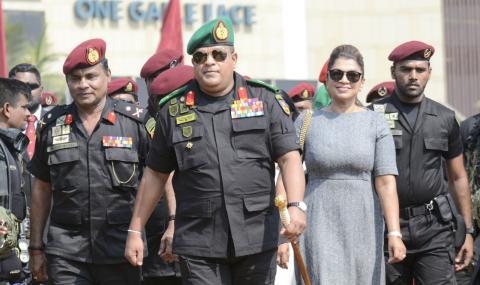Recent weeks have seen extraordinary events in Colombo when a virtual economic shut down of the country led to a “middle class” revolution that forced the resignation and flight of President Gotabaya Rajapaksa. Many are wondering what will happen next. There are real concerns that the new government under President Ranil Wickremesinghe won’t be able to fix the huge problems that the country faces, and a long period of civil conflict may follow.
Over the last several months, Sri Lanka has suffered a severe balance of payments crisis that saw the country default on international debts and not be able to pay for even the most basic imported commodities. This was the culmination of years of economic mismanagement and rampant corruption that included big loans from China, often for uneconomic vanity projects.
Much of this was the fault of president “Gota” Rajapaksa and his family. Sri Lanka has a long history of corruption, but over the last few years the Rajapaksas managed to turn it into a virtual kleptocracy. The Rajapaksa family and friends were appointed to most important public posts to oversee the pillaging of public finances. Corruption and mismanagement then combined with a series of external shocks since 2020 that largely closed down the tourism industry and increased prices of energy and other key imports.
When foreign reserves dried up a couple of months ago, the economy more or less ground to a halt. The country could not pay for imports of fuel, food or medicines. Large numbers of ordinary people joined the Aragalaya (or Struggle) protest movement that camped out on the Galle Face Green in central Colombo demanding Gota’s departure. In early July, the Presidential compound, Prime Minister’s residence and several other government buildings were taken over by largely peaceful crowds. Sri Lankan security forces declined to intervene with force.
But at the same time some 70 houses were also burned down, mostly homes of the Rajapaksa family and their cronies. Many attribute this campaign of arson to the socialist Janatha Vimukthi Peramuna party, and particularly its radical student wing, the Socialist Students’ Union.
On 12 July, Gota fled the country and later resigned. (Gota had a lot of trouble getting out. The United States, India and United Arab Emirates each refused his entry and for a while the local Civil Aviation Authority even refused to approve flight plans for his aircraft.)
Ranil Wickremesinghe, then prime minister, was appointed as new President by parliament until the next presidential elections due in 2024. Although Wickremesinghe has a reputation of being relatively clean and pro-Western, his appointment was not greeted with enthusiasm by India or Western governments who see him as too closely associated with the Rajapaksas and too reliant on their support.

Indeed, Wickremesinghe has huge challenges before him. He needs to renegotiate Sri Lanka’s debts with international creditors and then try to restart the economy. An International Monetary Fund rescue package, which may be finalised by the end of this month, will likely require painful economic reforms. This may include cuts to subsidies, the sale of government enterprises, breaking up monopolies, the loss of privileges for bosses and unionised workers and, not least, real action against corruption. (This last requirement is thought to be why the IMF wasn’t brought in before the crisis became so severe.)
Even the most unified and determined government would find it difficult to implement such reforms, and Wickremesinghe will be coming from a weak position. The parliament is dominated by the Rajapaksa family party, the Sri Lanka Podujana Peramuna, which is itself is a key part of the problem. Wickremesinghe doesn’t have his own party in parliament to rely on.
On the other hand, Wickremesinghe may have little to lose. He can serve out the rest of the presidential term and he doesn’t have a party to “feed” with corrupt appointments. Indeed, he lost all of his possessions when his home was burned down (probably) by socialist extremists. Perhaps all these things may help him transcend Sri Lanka’s normally corrupt politics.
None of this will satisfy the people in the Aragalaya movement that still occupies the Galle Face Green. When they sent Gota packing it was widely assumed that somehow the corrupt political system that he represented would fall apart and that parliament would be dissolved to allow the election of new leaders. But the protesters will be sorely disappointed if they think that the political class will retire gracefully. Parliamentarians are unlikely to agree to elections that will only see them tossed out. According to his advisors, Wickremesinghe has every intention of continuing as President until 2024. A new corruption commission may be established at the behest of the IMF, but it won’t be moving fast.
There’s every chance that the Aragalaya protestors will lose patience and try to throw out Wickremesinghe just as they did Gota. But Wickremesinghe’s crack down and arrests of “extremist” protestors on 22 July, signals that he won’t allow the government to be ruled from the Galle Face Green.
A degree of ambivalence can be detected among many Sri Lankans over what has happened. Although the great majority may be happy to see the back of Gota, they also acknowledge that he was legitimately elected and there are concerns about the intentions of extremists in the Aragalaya movement. There is scepticism about Wickremesinghe, but he too was appointed as president through constitutional processes.
The protestors are hungry for change, but further violence may alienate their middle-class supporters. Many remember the JVP socialist-led insurrection in the 1980s which led to as many as 80,000 deaths. The Sri Lankan military chose to stay in their barracks in July, but is unlikely to stand by while the country slides into prolonged civil conflict.

